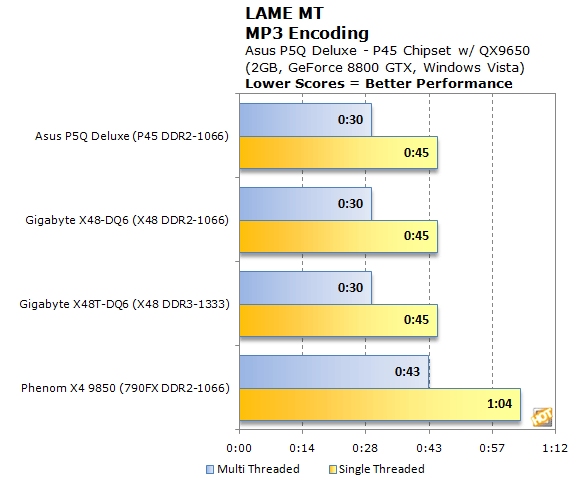Asus P5Q Deluxe - P45 Chipset with DDR2
In our custom LAME MT MP3 encoding test, we convert a large WAV file to the MP3 format, which is a popular scenario that many end users work with on a day-to-day basis to provide portability and storage of their digital audio content. LAME is an open-source mid to high bit-rate and VBR (variable bit rate) MP3 audio encoder that is used widely around the world in a multitude of third party applications.
|
|
|
In this test, we created our own 223MB WAV file (a hallucinogenically-induced Grateful Dead jam) and converted it to the MP3 format using the multi-thread capable LAME MT application in single and multi-thread modes. Processing times are recorded below, listed in seconds. Once again, shorter times equate to better performance.

Move along, folks. Nothing to see here. Our custom LAME MT benchmark didn't show any performance differences between the Intel-powered systems.
|
|
|
For this next batch of tests, we ran Kribibench v1.1, a 3D rendering benchmark produced by the folks at Adept Development. Kribibench is an SSE aware software renderer where a 3D model is rendered and animated by the host CPU and the average frame rate is reported. We used two of the included models with this benchmark: a "Sponge Explode" model consisting of over 19.2 million polygons and the test suite's "Ultra" model that is comprised of over 16 billion polys.

The P45-based Asus P5Q Deluxe put up slightly better scores than the X48 / DDR2 combo in the Kribibench rendering tests, but fell slightly behind the DDR3-equipped X48 system. The performance deltas separating the systems, however, were quite small to say the least.






